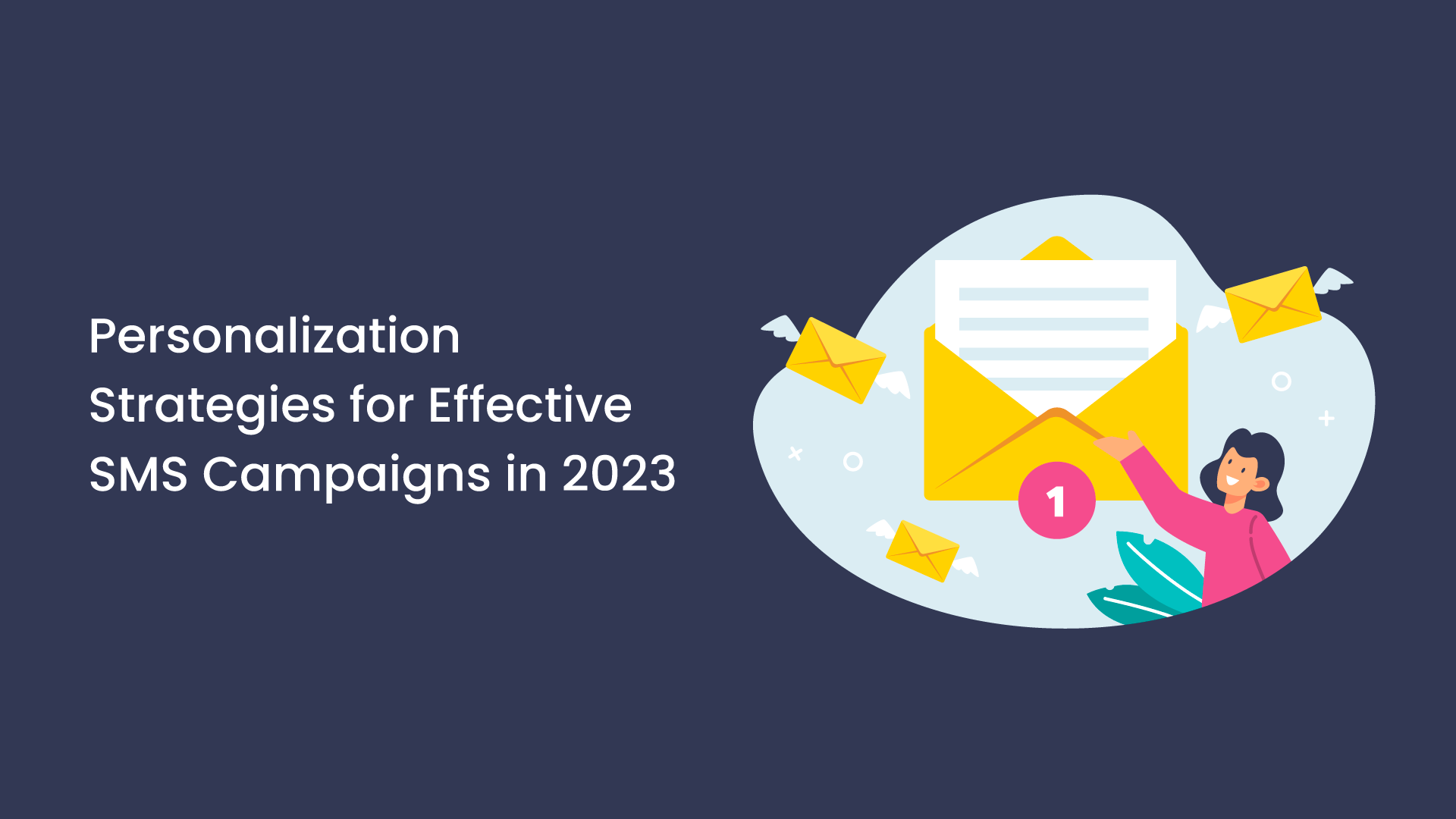Businesses may interact with and engage with consumers through a variety of channels, including email marketing, social media, display advertising, and pay-per-click campaigns. However, as inboxes overflow and ad filters become more prominent, a new solution has emerged: Short Message Service (SMS), sometimes known as texting. SMS allows the production of promotional and transactional messages that are promptly delivered to customers, providing a direct channel of connection that cuts through the noise.
A rapid change is taking place in the field of SMS campaigns. The “personalization of SMS campaigns” is a method that has climbed to the forefront of efficacy in the face of changing consumer preferences.
SMS campaigns personalization emerges as a potent tool for developing deeper relationships, promoting interaction, and improving consumer loyalty. Let’s combine these data with some current statistics on customization: 72% of customers prefer personalized messaging, and 80% prefer to buy from organizations that personalize the user experience. As a result, it’s easy to see why customization is vital not just for email marketing but also for SMS campaigns.”
Personalization may be used by your firm to generate messages that resonate on a personal level. Investigate the best practices for increasing the effectiveness of your SMS campaigns initiatives.
Understanding Personalization’s Effectiveness
Personalization is no longer a passing novelty; it is now a fundamental consumer expectation. As customers demand more relevant and personalized experiences, one-size-fits-all marketing is becoming obsolete. SMS campaigns personalization goes beyond simply addressing recipients by their first names. It all comes down to sending signals that are relevant to their choices, behaviors, and needs.
Segmentation Enables Focused Messaging
Segmentation is the cornerstone of effective customization. Divide your target market into smaller groups based on demographics, habits, previous purchases, or degrees of engagement. This enables you to create communications that are targeted to each group’s interests and preferences. Client segmentation, for example, allows you to make tailored product recommendations or one-of-a-kind discounts based on prior purchases.
Intelligent Content Personalization
Sending static, generic SMS messages is no longer permitted. With dynamic content customization, you may insert dynamic data like as product names, discount coupons, or location-specific information directly into your communications. This method personalizes your messaging, giving the appearance that it was created just for them.
Indicators of Prompt Outreach Behaviour
Behavioral triggers are automatic responses that occur when a customer performs a certain action. Send a thank-you letter with a special discount voucher, for example, after a customer makes their first purchase. Behavioral triggers improve the relevance and timeliness of your SMS messaging, which leads to higher engagement and conversion rates.
Making the Most of Customer Data
Personalization necessitates the collection of customer data, but this data must be utilized appropriately and honestly. Obtain specific authorization for data usage and follow privacy regulations such as the GDPR and the CCPA. Use the information you’ve gathered to create messages that add value to your customers’ lives, such as personalized suggestions based on their browsing history or abandoned carts.
Personalization Depending On Where You Live
You may personalise SMS messages using geolocation technology depending on the recipient’s actual location. This is especially critical for brick-and-mortar stores. To establish a sense of immediacy and relevancy, send location-specific promotions, event invitations, or store-related information.
Read More>> Segmentation Strategies for Successful SMS Campaigns
A/B Testing to Improve
A/B testing involves sending two different versions of a message to different groups of your audience to discover which one works better. Message content, call-to-action language, and transmission timings, among other things, should be evaluated. A/B testing helps you to fine-tune your personalization tactics by identifying what resonates with your target audience the best.
Interactive And Two-Way Messaging
Personalization entails more than just disseminating personalized materials; it also entails promoting engagement. Include interactive components in your SMS messages, such as polls, surveys, and contests. Encourage receivers to reply and share comments, establishing a two-way communication channel that boosts consumer engagement and loyalty.
Personalized Customer Service
Personalization may extend beyond marketing to customer service. Provide personalized help by sending automatic follow-ups after a purchase, soliciting comments, or giving troubleshooting recommendations based on past contacts with a consumer. This amount of care and attention can have a long-term positive impact.
Creating Captivating Calls-to-Action (CTAs)
Personalized CTAs have the ability to enhance conversion rates dramatically. Create CTAs that are pertinent to the recipient’s interests or habits. Send an SMS with a CTA prompting a consumer to look into comparable items or make a purchase if they have visited a specific product category on your website.
Summary
Personalization has emerged as a vital tactic for generating engagement, conversions, and customer loyalty as SMS campaigns continues to rise in 2023. To assist your firm, use segmentation, dynamic content, behavioral triggers, and other technology. They must then make a substantial connection with their audience. Keep in mind that successful customization is about expressing messages that connect with individuals on a personal level, demonstrating that you understand and respond to their unique interests and aspirations.
